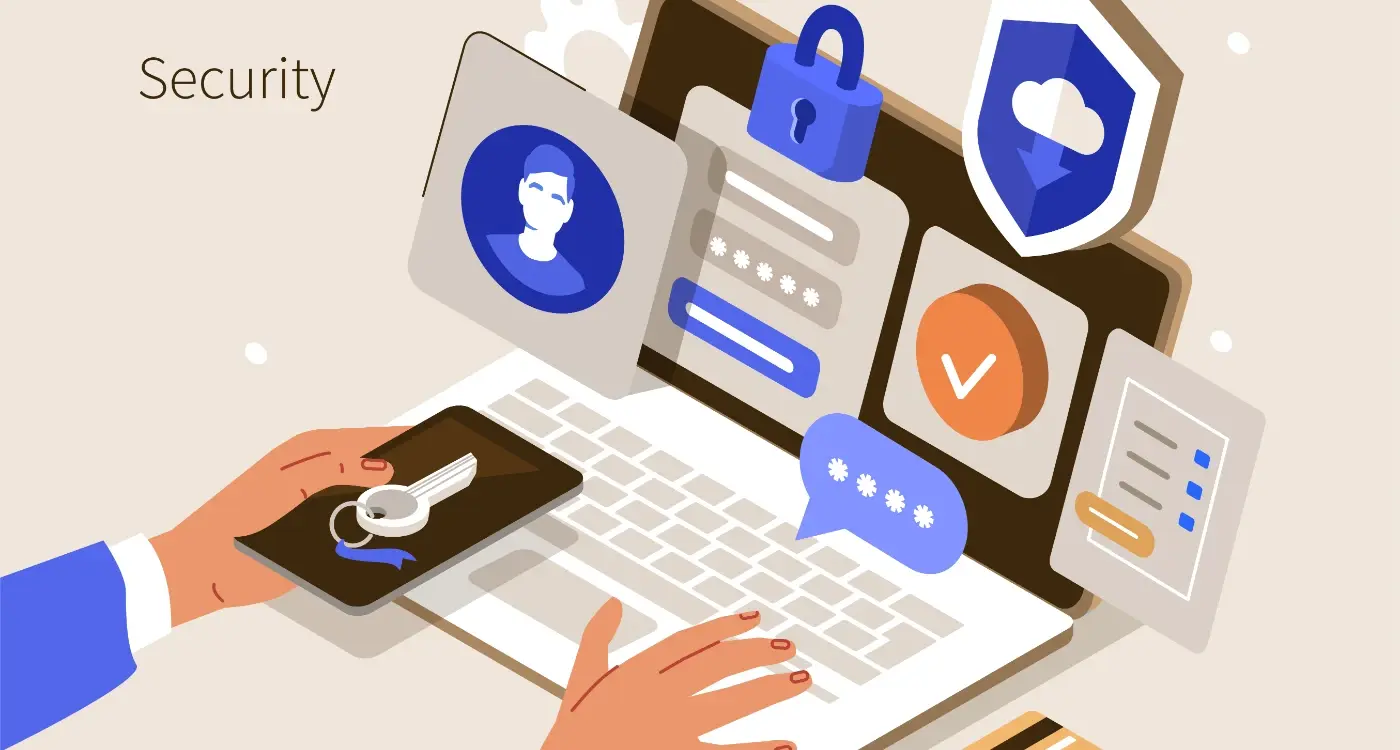Can Blockchain Apps Work On Both Iphone And Android?
You've got this brilliant blockchain app idea, but there's one massive problem keeping you up at night—will it actually work on both iPhone and Android? I see this worry all the time with clients who come to us at Glance. They're excited about their blockchain concept, but then reality hits: they need their app to reach users on both major platforms without breaking the bank or their sanity.
The good news is that blockchain apps can absolutely work on both iOS and Android. The not-so-good news? It's not as simple as just pressing a magic "make it work everywhere" button. There are technical hurdles, platform differences, and development choices that can make or break your project before it even gets started.
Building a blockchain app that works seamlessly across platforms isn't just about the code—it's about understanding how each system handles security, storage, and user experience differently
After working with mobile app development for over eight years, I can tell you that blockchain apps present unique challenges that traditional apps simply don't face. The decentralised nature of blockchain technology means you're dealing with complex cryptographic operations, large data requirements, and security considerations that vary between iOS and Android systems. But here's the thing—these challenges aren't impossible to overcome once you understand what you're working with.
What Is Blockchain Technology For Mobile Apps
Right, let's start with the basics—blockchain is like a special digital notebook that lots of people can read, but nobody can erase or change what's already written. When we talk about blockchain for mobile apps, we're talking about apps that use this special notebook to store information safely.
The clever bit is that this notebook isn't kept in one place; it's copied across thousands of computers around the world. So if someone tries to cheat or change something, all the other computers will notice and say "hang on, that's not right!" This makes blockchain apps really secure, which is why people love using them for things like sending money or keeping important records.
How Blockchain Apps Actually Work
When you use a blockchain app on your phone, you're not just talking to one computer—you're talking to a whole network of them. Each time you do something in the app, like send a payment or update your profile, that action gets checked and approved by multiple computers before it's added to the digital notebook.
The best part? Once something is written in this notebook, it stays there forever. Nobody can delete it or pretend it didn't happen, which makes these apps perfect for things that need to be trustworthy and permanent.
Understanding iOS And Android App Development
When building blockchain mobile apps, you need to understand how iOS and Android work differently—and trust me, they really do work differently! After years of developing apps for both platforms, I can tell you that each system has its own personality, rules, and quirks that you'll need to navigate.
iOS apps are built using Swift or Objective-C programming languages and run exclusively on Apple devices like iPhones and iPads. Apple controls everything about their ecosystem, which means stricter rules but more predictable behaviour across devices. Android apps, on the other hand, use Java or Kotlin and run on thousands of different devices made by various manufacturers—Samsung, Google, Huawei, you name it.
Key Differences That Matter For Blockchain Apps
The security models are quite different between the two platforms. iOS has a more locked-down approach which can actually benefit blockchain applications since security is paramount. Android offers more flexibility but requires extra care when handling sensitive blockchain data like private keys and wallet information.
Performance varies too. iOS devices tend to have more consistent processing power, whilst Android devices range from budget phones to flagship models. This affects how smoothly your blockchain app will run, especially when processing complex transactions or syncing with the blockchain network.
Always test your blockchain app on older, slower devices—not just the latest flagship models. Your users won't thank you for an app that crashes when they're trying to make important transactions!
Building Cross-Platform Blockchain Applications
When you're building blockchain apps that work on both iPhone and Android, you've got a few different paths to choose from. The smart approach—and the one I recommend to most clients—is using cross-platform frameworks like React Native or Flutter. These tools let you write your code once and deploy it to both platforms, which saves time and money.
Choosing Your Development Framework
React Native has been around longer and has excellent support for blockchain libraries. Flutter is newer but growing fast, and Google's backing it heavily. Both can handle the complex cryptographic operations that blockchain apps need. The choice often comes down to your team's experience and the specific blockchain network you're working with.
Managing Blockchain Integration
The tricky part isn't really the mobile development—it's connecting to blockchain networks reliably. You'll need to handle network switching, wallet connections, and transaction signing across both platforms. Web3 libraries work well with both frameworks, but you'll want to test thoroughly on actual devices rather than just simulators.
Most blockchain functionality happens through APIs anyway, so the heavy lifting isn't done on the device itself. This makes cross-platform development much more feasible than it would be for apps that need deep platform integration.
Technical Requirements For Blockchain Apps On Both Systems
When I'm working with clients who want to build blockchain apps, the technical requirements conversation always gets interesting—and sometimes a bit overwhelming! The good news is that both iOS and Android can handle blockchain technology, but there are some important differences to understand.
For iOS development, you'll need to work with Swift or Objective-C, and Apple's strict App Store guidelines mean your blockchain app needs to be squeaky clean. Apple doesn't like cryptocurrency mining apps or anything that might drain the battery too quickly. Your app will also need to handle the iOS keychain system for secure storage of private keys—something that's absolutely critical for blockchain applications.
Android's Flexible Approach
Android gives you more freedom but requires different technical considerations. Java or Kotlin are your main languages here, and you'll need to think about the huge variety of Android devices out there. Some older phones might struggle with the computational requirements that blockchain apps demand.
The biggest challenge isn't the blockchain technology itself, but making sure your app works smoothly across all the different devices and operating systems your users might have
Cross-Platform Solutions
React Native and Flutter have become popular choices for blockchain apps because they let you write once and deploy to both platforms. You'll still need native modules for the heavy blockchain stuff, but these frameworks handle the user interface beautifully across both iOS and Android.
Common Challenges When Developing For iOS And Android
Building blockchain apps for both iOS and Android isn't a walk in the park—trust me, I've been there! The biggest headache you'll face is dealing with two completely different operating systems that have their own rules, requirements, and quirks. Apple's iOS is like a strict headmaster who wants everything done their way, whilst Android is more like a relaxed teacher who gives you loads of freedom but expects you to figure things out yourself.
The technical challenges can be pretty overwhelming. Your blockchain app needs to handle complex cryptographic operations, manage digital wallets, and connect to blockchain networks—all whilst running smoothly on devices with different processors, memory limitations, and operating system versions. iOS devices tend to have more consistent performance, but Android's fragmentation means you're dealing with hundreds of different phone models and Android versions.
Key Development Hurdles
- App store approval processes that can reject blockchain apps without warning
- Different programming languages and development frameworks for each platform
- Varying security requirements and cryptographic library support
- Battery drain issues from continuous blockchain network connections
- Storage limitations for blockchain data and transaction histories
- Network connectivity problems affecting blockchain synchronisation
The approval process alone can drive you mad—Apple's App Store has strict guidelines about cryptocurrency and blockchain apps, often requiring extensive documentation and compliance checks. Android's Google Play Store is generally more lenient, but they've been tightening their rules too.
Popular Blockchain Apps That Work On Both Platforms
Let me tell you about some blockchain apps that have absolutely nailed the cross-platform approach. These aren't just technical achievements—they're proof that blockchain technology can work beautifully on both iOS and Android without compromising user experience.
Coinbase stands out as perhaps the most successful example. Their mobile app handles cryptocurrency transactions, wallet management, and trading across both platforms seamlessly. The development team built a single codebase that delivers consistent functionality whether you're using an iPhone or Samsung Galaxy.
Leading Cross-Platform Blockchain Applications
- MetaMask - Ethereum wallet and browser extension
- Trust Wallet - Multi-cryptocurrency storage solution
- Binance - Trading platform with built-in wallet features
- Exodus - User-friendly cryptocurrency wallet
- OpenSea - NFT marketplace and trading platform
What makes these apps successful isn't just their technical prowess—it's their focus on user experience. They understand that people don't care about the underlying blockchain complexity; they want apps that work reliably across their devices.
Study how successful blockchain apps handle security updates across platforms—they often release iOS and Android versions simultaneously to maintain security parity.
Why These Apps Succeed
The common thread among these successful blockchain apps is their commitment to platform consistency. They don't treat iOS and Android as separate products but as different windows into the same service. This approach reduces development costs whilst ensuring users get identical experiences regardless of their device choice.
Conclusion
After years of working with blockchain projects—and trust me, I've seen plenty of ambitious ones that never made it past the whiteboard—I can confidently say that yes, blockchain apps absolutely can work on both iPhone and Android. The technology itself doesn't discriminate between operating systems; it's really about how you approach the development process.
Cross-platform frameworks like React Native and Flutter have made this much easier than it used to be. You're not stuck building everything twice anymore, which saves both time and money. The real challenge isn't whether it's possible, but whether you're prepared for the technical complexity that comes with blockchain development. Managing private keys, handling network delays, and making sure your app works when the blockchain is slow—these are the things that'll keep you busy.
What I find most encouraging is seeing apps like MetaMask and Trust Wallet proving that users don't have to choose between platforms. They want their blockchain apps to work seamlessly whether they're using an iPhone or Android device. The barriers that once existed between iOS and Android development are getting smaller every day, and blockchain technology is no exception to this trend.
Share this
Subscribe To Our Learning Centre
You May Also Like
These Related Guides

How Do You Choose Between Native and Cross-Platform Apps?

Which Development Platforms Offer the Best Security Features?



